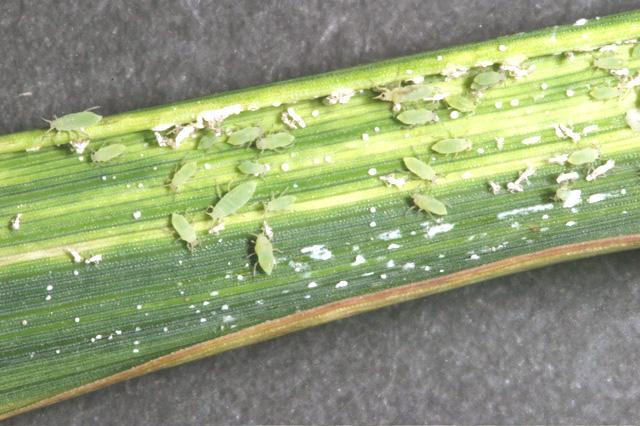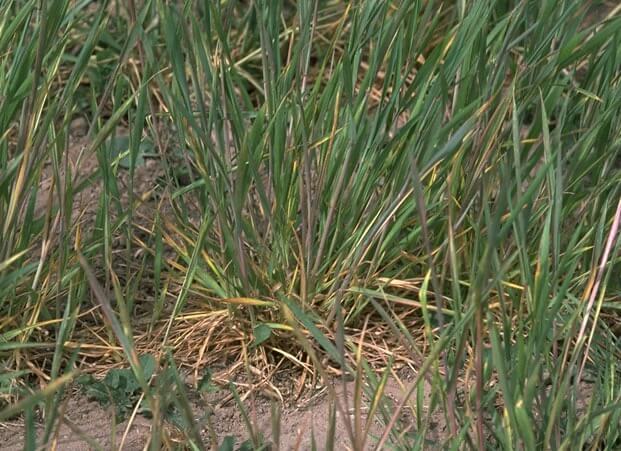Russian Wheat Aphid
Diuraphis noxia
The Russian wheat aphid arrived in the Great Plains in 1986 and caused serious economic losses in wheat across the High Plains for about 10 years, before receding in importance as biological controls, aided by resistant cultivars, became more effective. More recently, significant infestations in Kansas have generally been limited to the counties near the Colorado border and in the southwest corner of the state.
 |
 |
This small, lime-green aphid has a football-shaped body and very short cornicles, legs, and antennae. These aphids prefer to feed on the newest growth of the wheat plant, rolling up the leaves to create a protected microhabitat. Resistant varieties are less prone to leaf rolling, leaving the aphids more exposed to predation and parasitism. Infested leaves exhibit purple, yellow or white longitudinal streaks along the leaves and leaf sheaths. Heavily infested plants may appear flattened, with young tillers lying almost prostrate to the ground.
|
Russian wheat aphid damage. |
High populations of Russian wheat aphids that persist for long periods can lead to serious crop losses. Risk of yield loss is highest when infestations develop in early spring. Fortunately in Kansas, climatic conditions and biological control by predators, are normally quite effective in keeping them below damaging levels.
More information on the biology and life history of the greenbug can be found in KSRE publication MF2666 Russian Wheat Aphid.
Please refer to the most recent version of the Wheat Insect Management Guide for control options.
Page last updated 06/06/2024 by J.P. Michaud.
